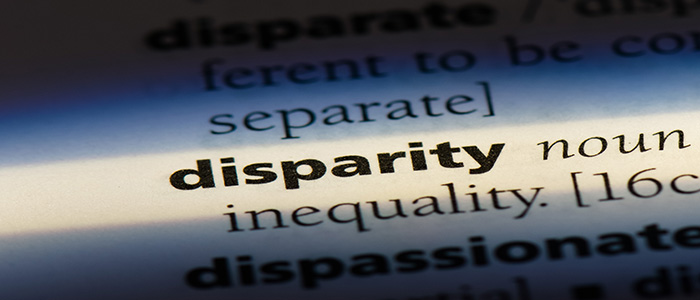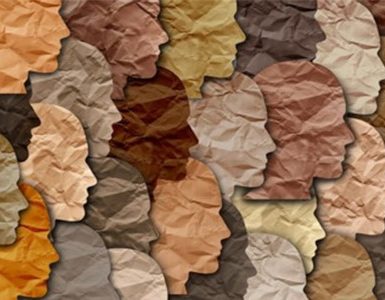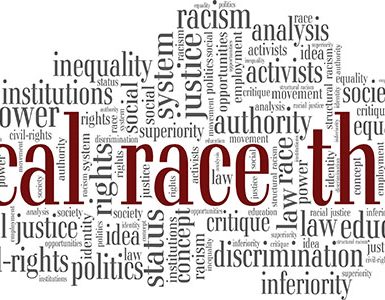As of September 13, 2020, 616 Washington D.C. residents have lost their lives to COVID-19. Another 14,622 residents have tested positive for SARS-CoV-2, the virus driving the current global pandemic.
While things appear to be trending in the right direction—the District of Columbia is consistently reporting case positive rates below 5%, among other metrics for an eventual Phase 3 reopening—these numbers are still sobering. They also point to a troubling reality public health experts have long warned of:
Marginalized individuals, including racial and ethnic minorities, are being disproportionately impacted by COVID-19.
To correct these disparities and save lives, awareness and action are needed. Keep reading to join the discussion.
3 Things to Know About Socioeconomic Disparities and COVID-19
1. Racial and ethnic minorities are disproportionately affected by the coronavirus pandemic.
The data from the U.S. Centers for Disease Control and Prevention (CDC) is clear. Compared to white non-Hispanic individuals, Black or African-American individuals are 2.6 times more likely to contract COVID-19, 4.7 times more likely to be hospitalized, and 2.1 times more likely to die of the pandemic illness. Rate ratios are equally alarming for Latinx and American Indian/Alaskan Natives:
- Hispanic or Latinx individuals: 2.8 times higher risk of COVID-19 infection, 4.6 times higher risk of hospitalization, and 1.1 times higher risk of death
- American Indian/Alaskan Native individuals: 2.8 times higher risk of COVID-19 infection, 5.3 times higher risk of hospitalization, and 1.4 times higher risk of death
Washington D.C. isn’t immune to the trend. As reported by NPR, Black or African-American people account for fully 80% of the COVID-19 deaths in D.C. despite representing less than half of the District’s population. Current data from Mayor Muriel Bowser’s office further shows that the Wards with the highest number of reported cases—Ward 4, 5, 8, and 7—are predominantly Black communities.
2. Many factors explain why minorities are among the most affected by COVID-19.
According to the CDC, multiple conditions point to why racial and ethnic minorities are at a higher risk of COVID-19 infection and death than other groups of people. These include:
- Discrimination: we know chronic stress can weaken a person’s immune system. Direct and indirect effects of discrimination can be a major source of chronic stress, thereby lowering an individual’s ability to fight off infections and stay healthy. Discriminatory obstacles within healthcare, finance, housing, and education further contribute to the disproportionate impact of the pandemic on minorities.
- Healthcare access and utilization: compared to non-Hispanic whites, racial and ethnic minority groups are more likely to be uninsured or underinsured. Minorities are also more likely to face greater barriers to healthcare access such as unreliable transportation or lack of child care.
- Occupation: many of the nation’s essential industries—including grocery stores and public transportation—are predominantly occupied by people of racial and ethnic minorities. These jobs are not “work from home” compatible and can therefore increase a person’s risk of COVID-19 exposure.
- Educational, income, and wealth gaps: some individuals of racial and ethnic minority groups have fewer opportunties for higher education and higher paying jobs, which can limit a person’s career options and make it harder to build the financial security needed to take time off for sickness.
- Housing: individuals from certain racial and ethnic groups often live in crowded households, making social distancing and self-isolation difficult. Many of our poorest families living below the poverty line find themselves in areas with increased exposure to lead and other environmental toxins, which may further weaken their immune system and increase their susceptibility to COVID-19.
Racial and ethnic minorities are also more likely to experience chronic health conditions like type 2 diabetes and obesity, which increase the risk of severe COVID-19 complications. And as it is for many urban populations around the country, disadvantaged D.C. residents often lack access to nutritious food, which can lead to even poorer health outcomes.
3. Reinvesting in our more disadvantaged communities can help combat COVID-19.
Experts are urging people to fight the pandemic crisis at hand and take immediate action to protect their families and neighbors. Hand hygiene, quarantining, and social distancing all play a role to this effect. But data also suggests that improving the health and safety of our nation’s minorities will require long-term efforts, as well.
Promoting positive changes in public health policy, electing officials who can champion these changes, and employing the support of community or faith-based organizations are all important ways to reduce socioeconomic disparities. Encouragingly, research suggests these efforts can make a difference. For example, Harvard T.H. Chan School of Public Health notes that long-term studies suggest early childhood programs help Black or African-American children enjoy better outcomes later in life, including higher education, higher income, and yes—improved health.
The bottom line:
Healthy communities lead to healthier people. Now more than ever, it’s time for communities to start taking care of each other.


















Add comment